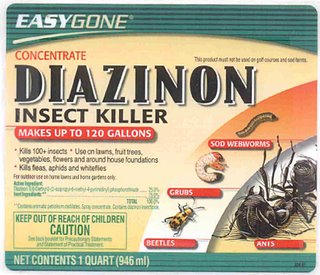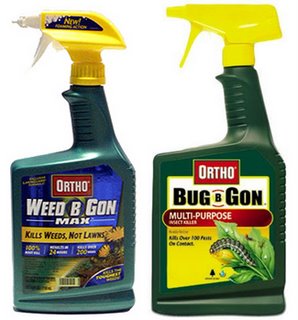TTAB Says B-GON to "EASYGONE" for Insecticides, Sustains 2(d) Opposition
The Board applied a dose of APPLICATION-B-GON in sustaining an opposition to registration of the mark EASYGONE for "herbicides and insecticides for agricultural and domestic use," finding the mark likely to cause confusion with the marks WEED-B-GON and BUG-B-GON, registered for products for controlling pests inside the home and outdoors. OMS Investments, Inc. v. Central Garden & Pet Co., Opposition No. 91156249 (July 10, 2006) [not citable].

Opposer claimed to own a family of "B-GON" marks, including WEED-B-GON, BUG-B-GON, BRUSH-B-GON, GRASS-B-GON, and ANT-B-GON, but the Board found Opposer's proofs inadequate. "[T]he record does not show that the B-GON marks were used and promoted together in such a manner as to create among purchasers an association of common ownership based upon the family characteristic, i.e., B-GON." It is not enough simply to use a series of similar marks.
Looking at Opposer's marks individually, the Board found "some evidence of fame" of the WEED-B-GON mark: use of the mark since the early 1990s and "sales and advertising figures comparable to sales and advertising figures in other cases where fame has been found." As for BUG-B-GON, Opposer proved use since 1983, but sales revenues did not match those for the WEED-B-GON product. They were sufficient, however, to establish that BUG-B-GON is a strong mark. As to the remaining marks, the record failed to show that they are famous "or even well-known."
Running through the other du Pont factors, the Board found the goods to be identical in part, and the channels of trade and the classes of purchasers to be the same. The record was devoid of evidence regarding the care with which the subject products are purchased, and so the Board considered this factor to be neutral.

As to the marks, the Board agreed with Opposer that they have "a similar cadence and do rhyme with one another." Furthermore, they are similar in connotation and commercial impression "in that they suggest that the lawn or garden problem facing the purchaser will terminate through the use of the parties' goods." In sum, "the overall similarities in sound, meaning and commercial impression" outweigh the differences in the marks.
In an effort to undermine the strength of Opposer's marks, Applicant submitted several third-party registrations for marks that include the formatives "BE GONE or B-GONE," but the Board found them of no probative value. For one thing, they concerned goods or services unrelated to Applicant's goods.
The lack of actual confusion, even though the goods of the parties have been sold in the same stores, was likewise not probative because "the record does not reflect how long both parties' goods have been sold concurrently at [the stores] and the extent of sale of EASYGONE goods."
Applicant offered the results of a mall intercept survey, but the Board deemed the survey "flawed in that the stimulus used is one not suited for Board proceedings where the issue is the registrability of the mark depicted in the drawing."
"Specifically, applicants showed respondents containers containing a variety of wording, shapes, colors and trade dress. Applicant's marks and Opposer's marks were not displayed prominently, other marks were on the containers, and the marks at issue here were subordinated to other house marks and source indicators, which undoubtedly influenced the responses."
Finally, Opposer's claim that applicant, as a former distributor of the B-GON products, had a "bad intent" when it chose the EASYGONE mark, but the Board was unpersuaded. Applicant retained naming companies, commissioned a T&T search that was reviewed by its attorneys, and hired a research firm to determine the impression the mark would have on potential customers.
Balancing all the factors, the Board found a likelihood of confusion between Applicant's mark EASYGONE and Opposer's WEED-B-GON and BUG-B-GON marks, particularly because of the strength of those two marks of Opposer. However, regarding the remaining three marks, "which have not been widely advertised and whose underlying goods have not had the commercial success applicant's' other marks have had," the Board found that Opposer had failed to establish a likelihood of confusion.
TTABlog Comment: The Board's treatment of the "family-of-marks" doctrine has been consistently irksome. (See TTABlog comment here). In this one, however, the Board seemingly made the right call. At a minimum, the marks in the supposed "family" should appear in the same advertisements, or perhaps be displayed side-by-side in retail stores. Opposer's testimony here was really feeble and failed to established even the slightest family tie.
Text Copyright John L. Welch 2006.




0 Comments:
Post a Comment
<< Home